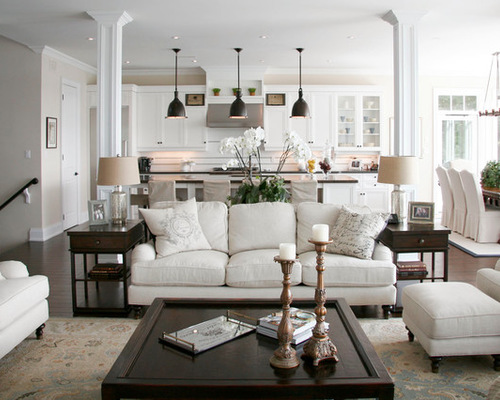
Cotton 1: Catherine Staples Interiors, original photo on Houzz
The case for cotton. If you’re thinking of buying a new sofa or chair or reupholstering an old one, don’t overlook good old-fashioned cotton. While it’s mostly associated with washable slipcovers and a casual look, cotton can actually be pretty formal or modern as well. It all depends on the fabric.
Reupholstering? Hire a Furniture Repair Pro to Help
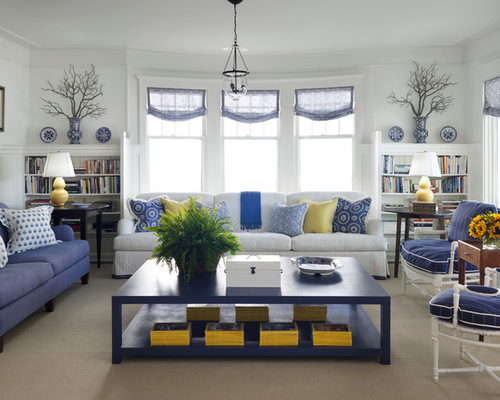
Cotton 2: Tom Stringer Design Partners, original photo on Houzz
Cotton 101: The Basics
Staple. When multiple cotton fibers are twisted together, the result is a smooth, strong thread that can be woven into fabric. Cotton fibers have a definite length (something called staple). This is different than so-called filament fibers, such as silk (which comes from unraveled silkworm cocoon) and polyester, which have an almost indefinite length.
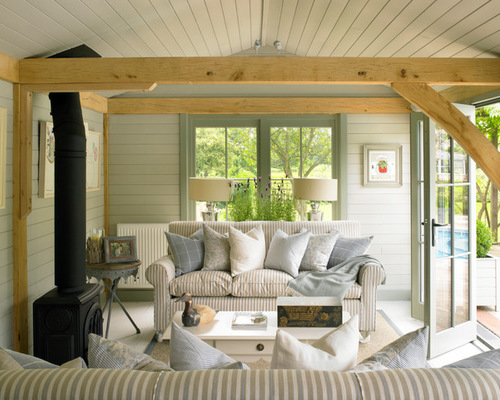
Cotton 3: Stephanie Dunning Interior Design, original photo on Houzz
The longer the staple, the better. If you want high-quality cotton, look for nice, long staples. Premium cotton, made from the longest fibers, can be almost as smooth and lustrous as silk. Lesser grades, made from shorter fibers, may appear fuzzy and dull. And the difference goes beyond appearance: Fabric made using shorter fibers is less durable than that made from longer fibers.
Weave and durability. How well the fabric wears is also determined by the weave. A heavier cotton fabric with densely woven threads, such as denim or canvas, is more durable than a thinner cotton like muslin or percale (often used to make bedsheets). Cotton velvet can also be extremely durable if the backing is tightly woven.
Cotton Bedding Sets for Breathability
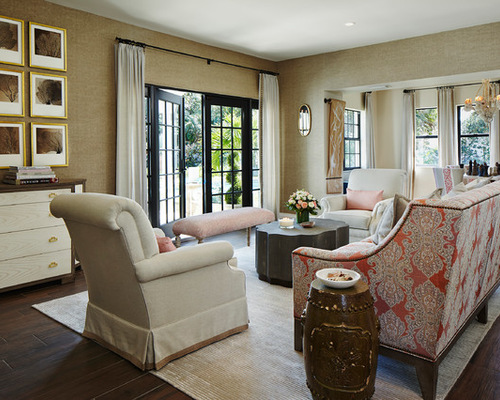
Cotton 4: Piper Gonzalez Designs, original photo on Houzz
Types of weaves. Cotton fabrics get their unique appearances from the way they’re woven. A canvas weave (duck or sailcloth) is typically used for casual slipcovers, while a Damask or velvet can be more formal and elegant. Cotton is also a popular choice for printed fabrics.
The benefits of cotton. One of the main things that makes cotton such a great choice for upholstery is that it’s breathable. It allows heat and moisture to move away (or wick) from the skin. Cotton also resists pilling and has good abrasion resistance (meaning it’s long-lasting). Many cotton fabrics are also washable, making them a go-to for slipcovers.
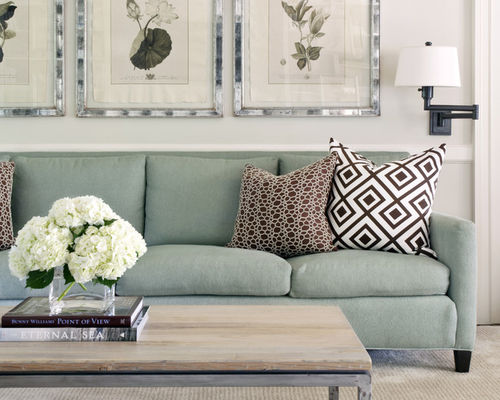
Cotton 5: Tobi Fairley Interior Design, original photo on Houzz
The downsides of cotton. As great as cotton is, it isn’t perfect. Pure cotton is prone to wrinkling (though not as much as linen). Wrinkles aren’t a huge problem on tightly upholstered pieces, though. Cotton is also not the most stain-resistant fabric — it can easily absorb dye and spills. (Beware of sitting on cotton with new bluejeans.) The last thing to be aware of is that direct sunlight can fade cotton fabrics and weaken the fibers.
The organic side of cotton. Traditional cotton plantations around the world rely on a lot of pesticides and chemicals to grow the crop. Organic cotton is definitely a move in the right direction, but the fibers may still be subjected to chemical treatments during the bleaching or dyeing process. If you want to avoid as many chemicals as possible, choose an organic cotton in its natural colors (cream, tan or light green).
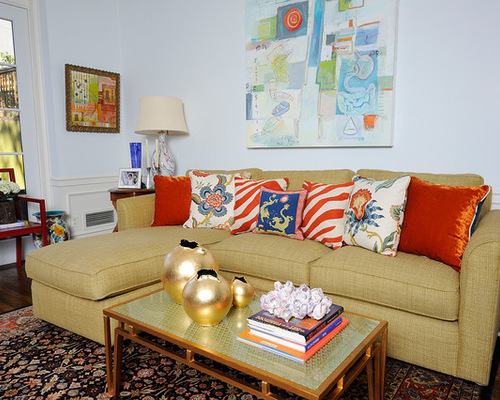
Cotton 6: Kelly Nelson Designs, original photo on Houzz
Cotton blends. Blending cotton with other fibers can offer you the best of both worlds. Cotton-linen blends can give you linen’s crispness with fewer wrinkles. Cotton blended with polyester can increase durability and stain-resistance.
The closing argument. Cotton is a great option for those looking for upholstery made from a natural material. It’s versatile enough to work in any style of room and provides a cool, soft place to sit.
Use Cotton in Outdoor Fabrics Too

